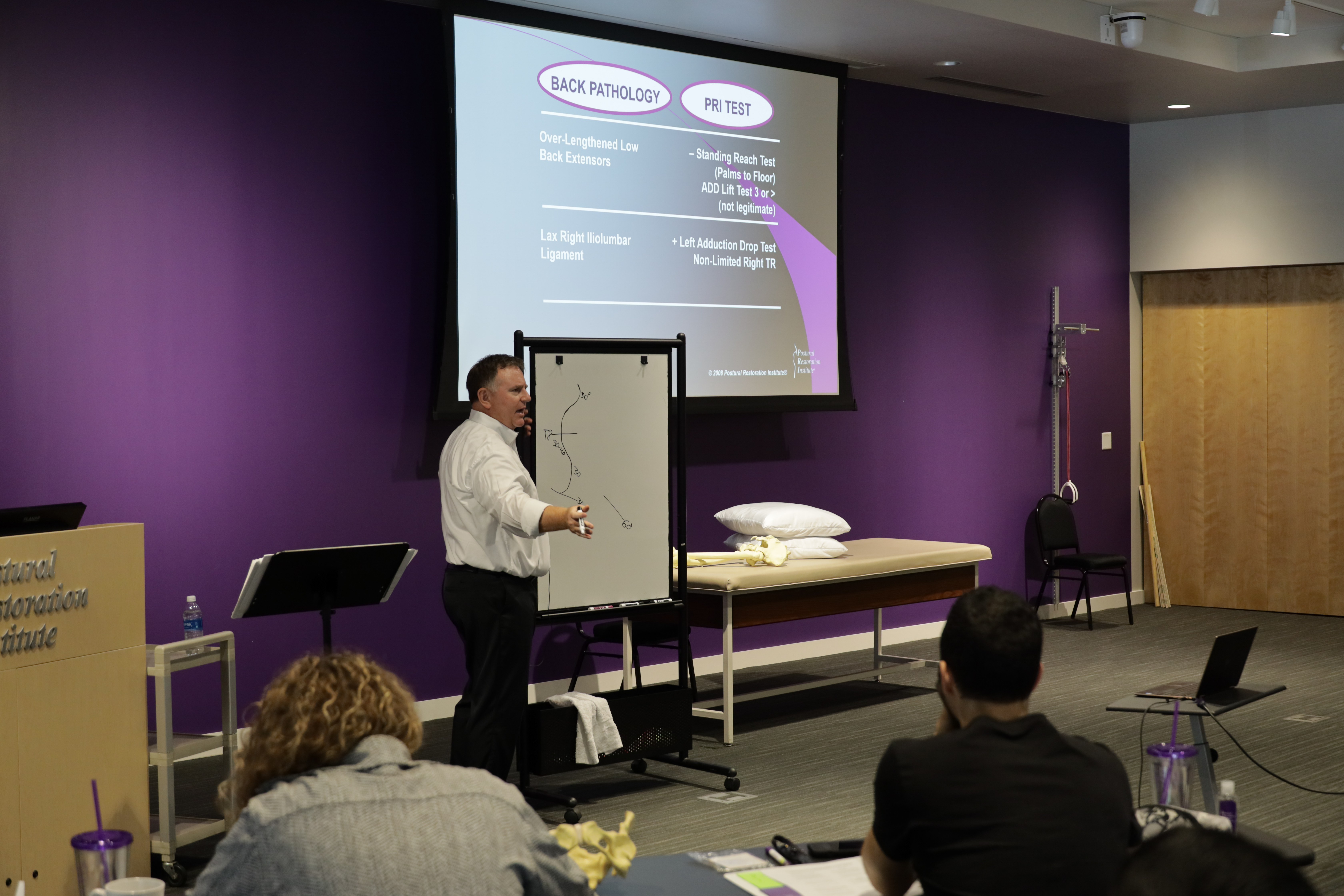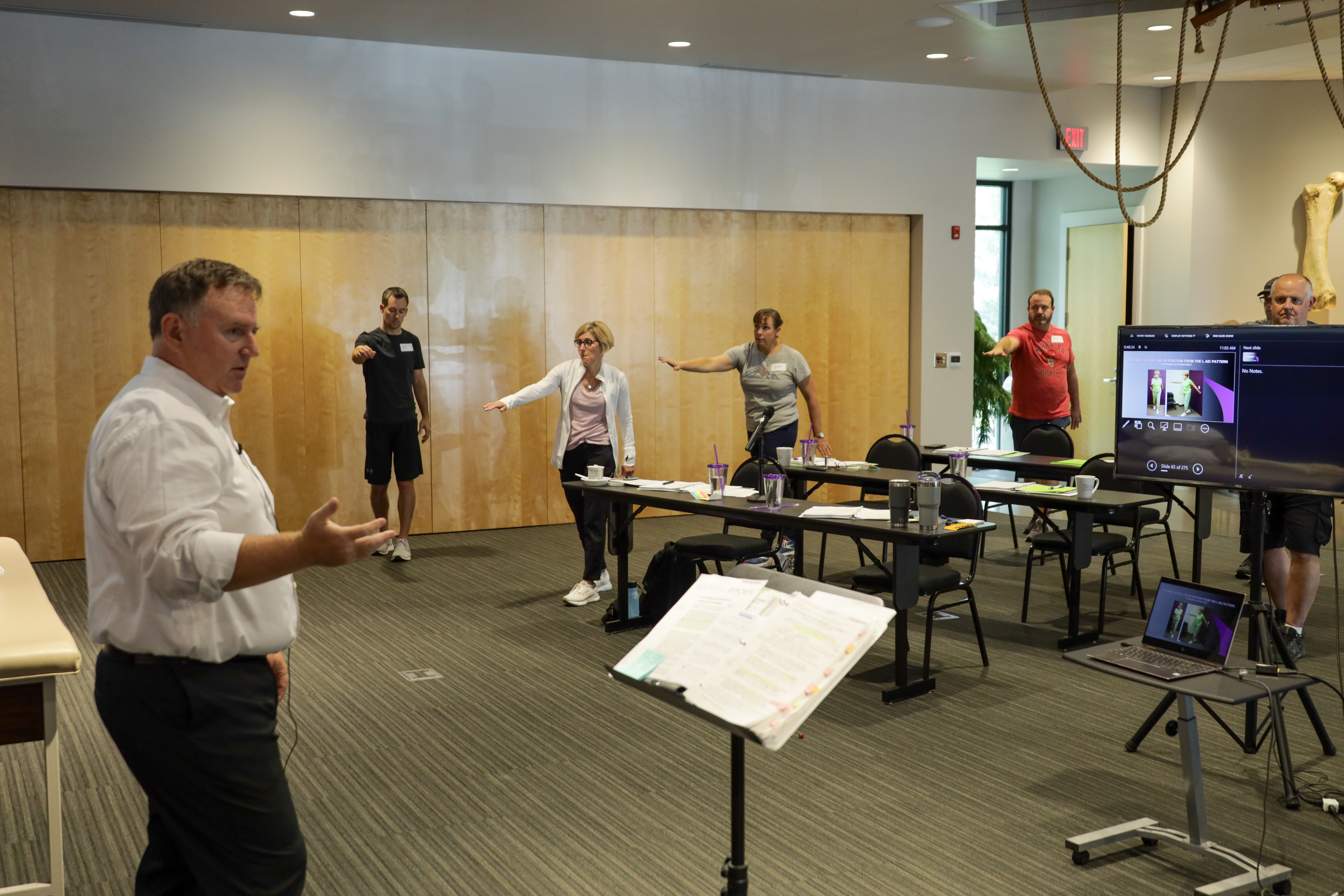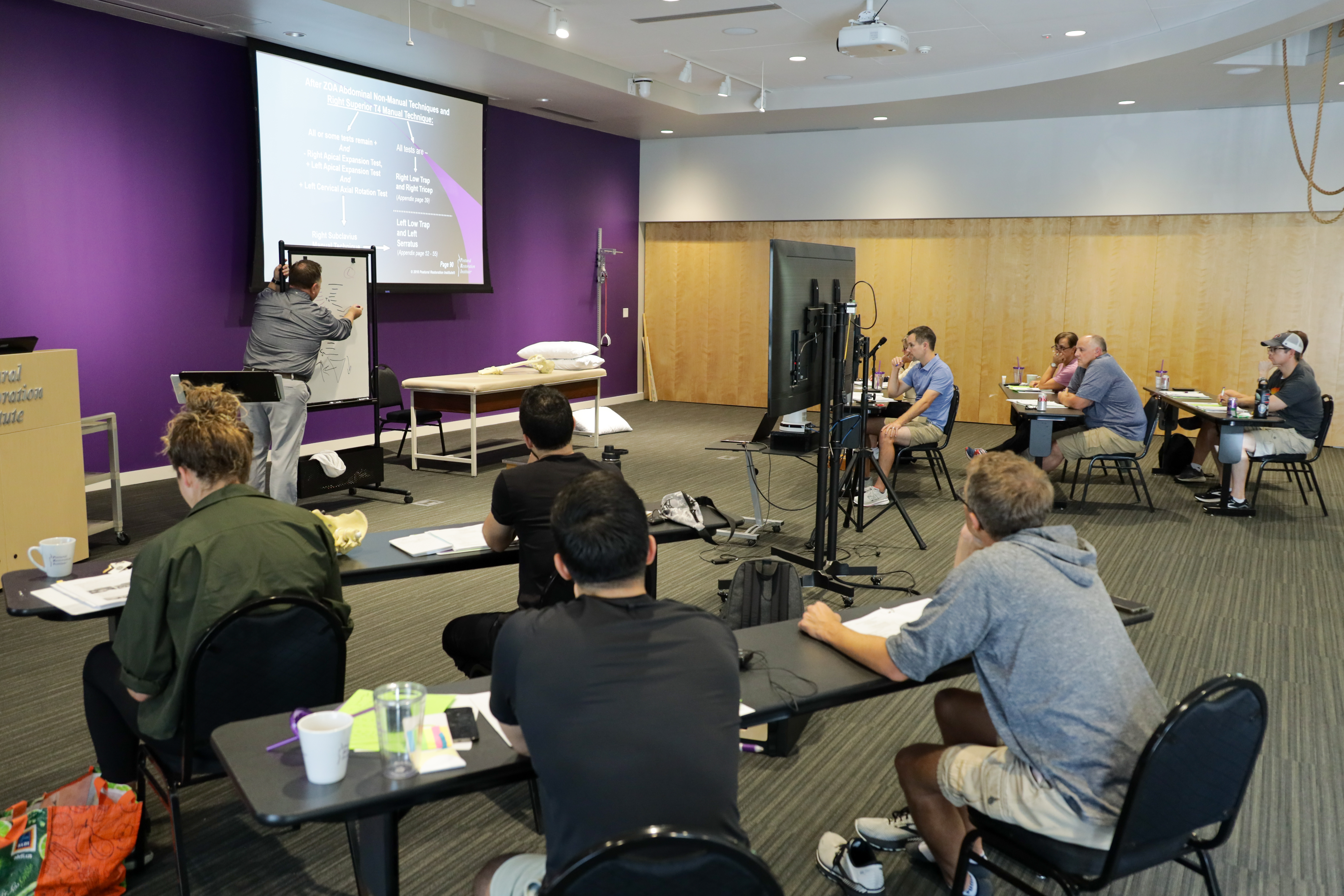The Impingement & Instability course has been a clinician’s course for a long time. And that is even more the case now than ever before. I&I has evolved into an excellent precursor for the PRI Cervical, Cranial, Voice Box, and Forward Locomotion courses. This was very evident in the most recent presentation of I&I, which just happened to be the final delivery of this course for 2023.
Since it is a Secondary Course, the course has the opportunity to go into several different directions, depending on who is in attendance and the questions the attendees ask. This is one of the primary reasons that each I&I course is different every time it’s presented.
We were able to touch upon content from a multitude of courses, but our focus remained on the value and necessity of both Impingement and Instability as great concepts, which lead us into the value of alternating compression and decompression to increase our ability to become less functionally cortically dominant. Being able to properly manage a system below C7 allows management of issues above C7 to become easier. As a result, we start drawing the connection between the scapula and calcaneus from very, very early on Day One.


My thanks to Torin Berge, PT, PRC, for his help digest and break down the 4 unique non-manual techniques that are in this course. We were able to have an in-depth discussion about the value of these techniques, which was a treat. My thanks to Nancy Hammond, PT, PRC and Hayley Kava, PT, PRC for their questions and presence. And none of the live-stream would have been possible without RJ Hruska and his direction and production of this course. It is not lost on us that the live-stream has expanded PRI Nation, and I am eternally grateful for all of those in attendance who live in other parts of the world.

If you haven’t had an opportunity to attend the I&I course, I would encourage you to do so as every course is different, depending on the movement specialists present. My thanks to all of the movement specialists who were in attendance, and I look forward to teaching this course in 2024.


